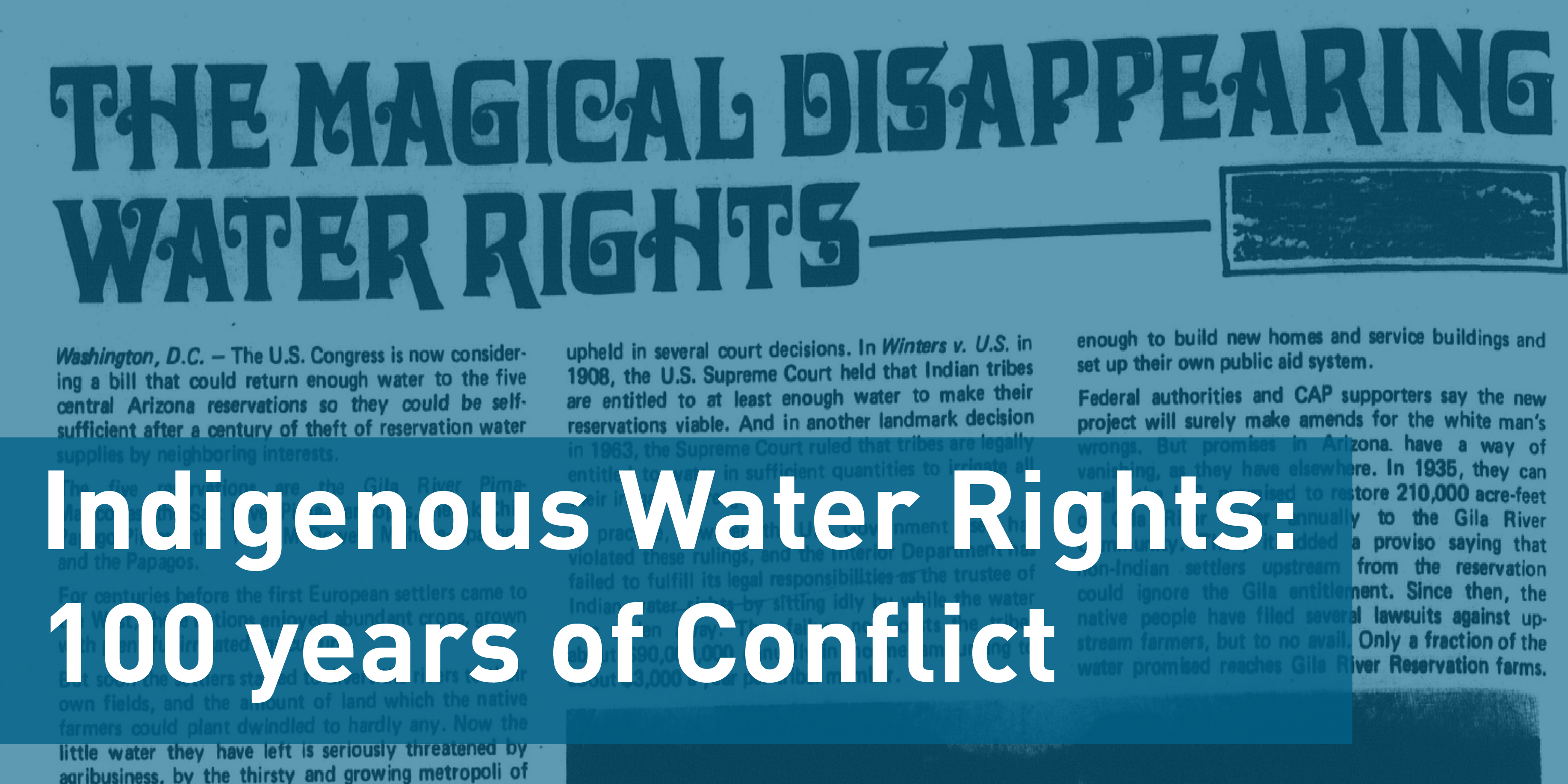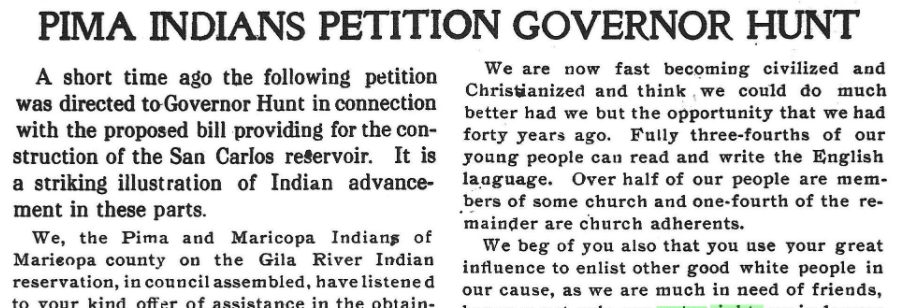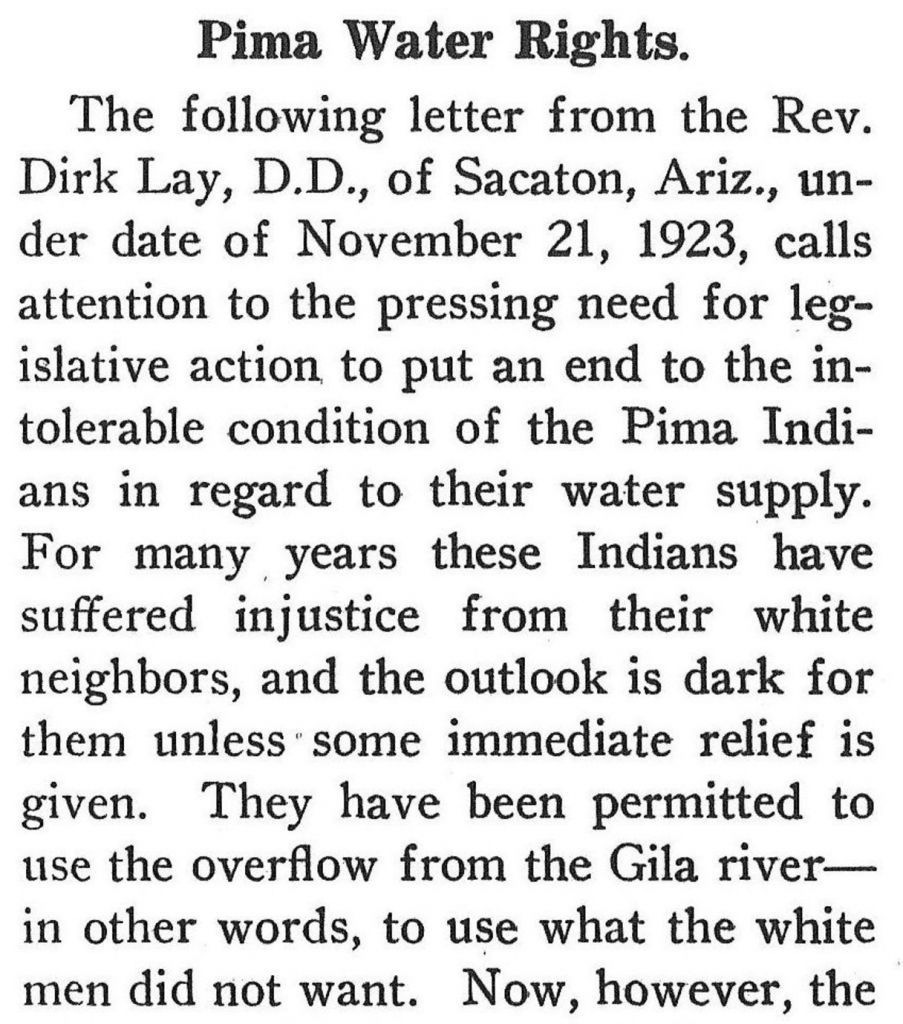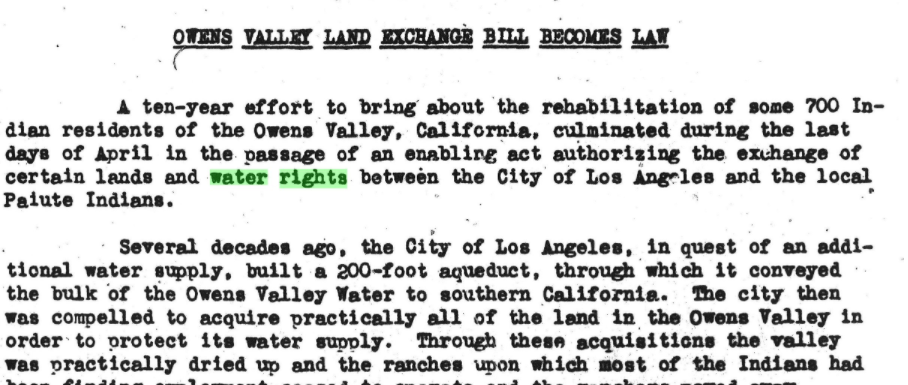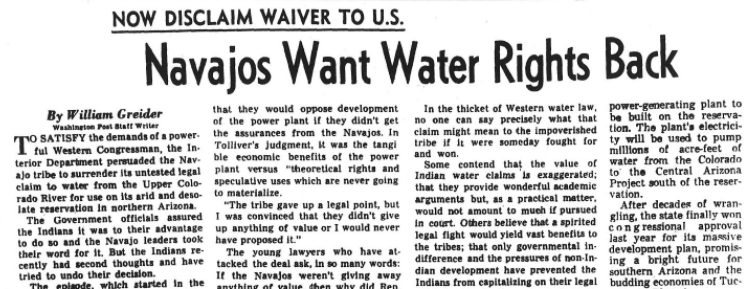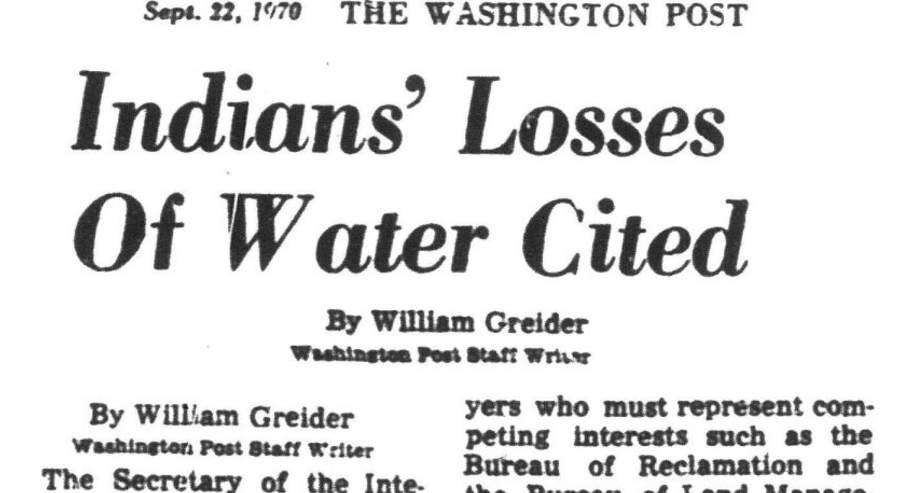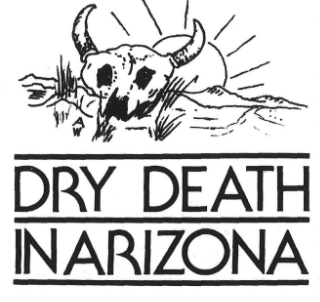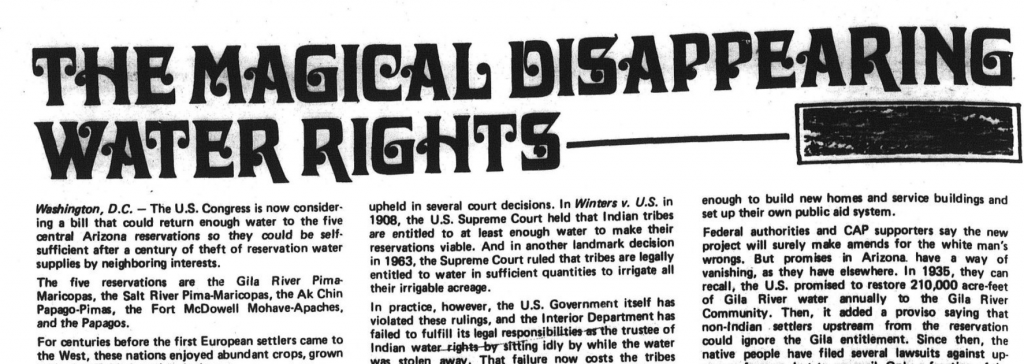Once again, the Dakota Access Pipeline—and the controversy that surrounds it—is in the news. At the heart of the controversy is the pipeline’s potential threat to the Standing Rock Indian Reservation’s clean water supply. However, clashes between Indigenous Americans and the federal government over water rights are nothing new. These conflicts have been documented for over 100 years. One of the first conflicts over the water rights of Indigenous Americans played out in the 1908 Supreme Court decision in the case温特斯诉美国。在这种巨大的情况下,炮台贝尔纳普美国印第安人保留地反对反对专用系统of controlling water, which resulted in water being diverted from the reservation. The court ultimately sided with the Fort Belknap American Indian Reservation, and the decision defined the water rights of Native Americans.
尽管温特斯诉美国decision, conflicts over water rights have continued. The documents below are a collection of newspaper clippings and internal documents of Native American associations regarding their water rights.
Pima Indians Petition Governor Hunt (1912)
Indian’s Losses of Water Rights Cited (1970)
上述文件只是涉及到水权的材料的快照中包含的Indigenous Peoples: North Americaarchive, but they offer a unique perspective on this complex issue. As the impending legal battle over the Dakota Access pipeline plays out in court, we can reflect upon similar past conflicts and in doing so, gain a clearer understanding of the present.

